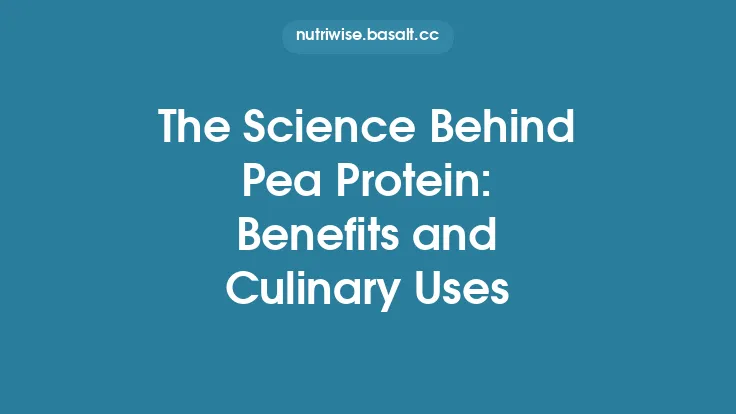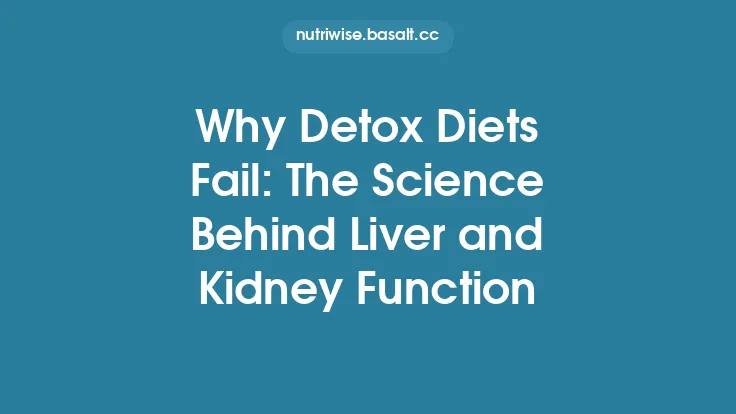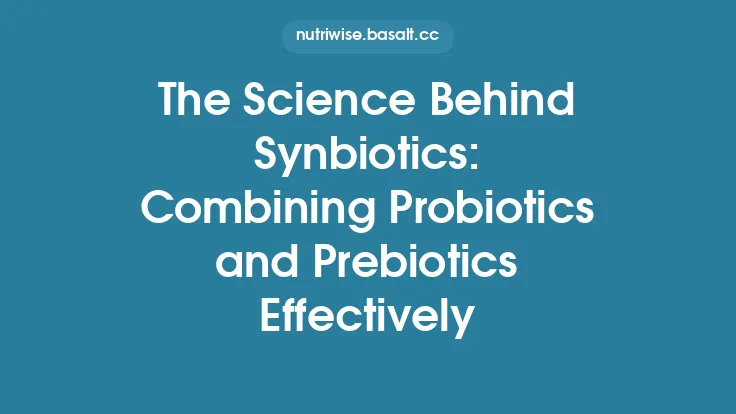Enzyme‑rich foods have been a staple in traditional diets around the world for centuries, prized not only for their flavor and nutritional value but also for the subtle way they support the body’s own digestive processes. While the human pancreas and stomach produce a sophisticated suite of enzymes to break down proteins, carbohydrates, and fats, the enzymes that arrive with the food we eat can act as valuable allies, especially when the body’s production is compromised by age, stress, or illness. Understanding how these foods work, which foods are most potent, and how to incorporate them wisely can help anyone improve nutrient absorption, reduce digestive discomfort, and promote overall gut health.
What Makes a Food “Enzyme‑Rich”?
Enzyme‑rich foods are those that naturally contain high concentrations of biologically active proteins capable of catalyzing biochemical reactions. In the context of digestion, these enzymes typically fall into three broad functional groups:
- Proteolytic enzymes – break peptide bonds in proteins, turning them into smaller peptides and amino acids.
- Carbohydrases – cleave complex carbohydrates into simpler sugars that are easier for the intestinal lining to absorb.
- Lipolytic enzymes – act on fats, converting triglycerides into free fatty acids and glycerol.
The presence of these enzymes varies widely among plant and animal sources, and the activity level is influenced by the plant’s developmental stage, storage conditions, and processing methods. Foods that are harvested at peak ripeness and consumed with minimal heat treatment tend to retain the greatest enzymatic potency.
How Dietary Enzymes Complement the Body’s Own Digestive System
The human digestive tract is a highly regulated system that releases enzymes in response to the arrival of food. However, several scenarios can limit endogenous enzyme output:
- Aging: Pancreatic enzyme secretion naturally declines after the fifth decade of life.
- Chronic stress: Elevated cortisol can suppress digestive secretions.
- Medical conditions: Pancreatitis, cystic fibrosis, or certain gastrointestinal surgeries reduce enzyme availability.
- Dietary patterns: Low‑fiber, highly processed diets can blunt the gut’s signaling mechanisms for enzyme release.
When dietary enzymes are present, they can:
- Kick‑start the breakdown of macronutrients before the body’s own enzymes are fully secreted, reducing the workload on the pancreas and stomach.
- Create smaller digestion products that are more readily absorbed, which can be especially beneficial for individuals with malabsorption syndromes.
- Modulate the gut environment by generating bioactive peptides and sugars that serve as substrates for beneficial microbes, thereby supporting a balanced microbiome.
In essence, dietary enzymes act as a “pre‑digestive” step, smoothing the transition from the mouth to the small intestine and helping to maintain a steady flow of nutrients into the bloodstream.
Key Food Sources and Their Enzyme Profiles
| Food | Predominant Enzyme(s) | Typical Enzyme Activity (U/g) | Notable Nutritional Highlights |
|---|---|---|---|
| Pineapple | Bromelain (protease) | 200–400 | Vitamin C, manganese, bromelain also exhibits anti‑inflammatory properties |
| Papaya | Papain (protease) | 150–300 | Beta‑carotene, folate, vitamin C |
| Kiwi | Actinidin (protease) | 100–250 | Vitamin K, potassium, dietary fiber |
| Mango | Amylase & protease mix | 80–150 | Vitamin A, vitamin C, polyphenols |
| Raw honey | Invertase, diastase (carbohydrases) | 30–70 | Antioxidants, trace minerals |
| Fermented vegetables (e.g., kimchi, sauerkraut) | Lactase, proteases, various carbohydrases | 20–60 | Probiotic bacteria, vitamin K2, fiber |
| Sprouted grains & legumes | Amylase, protease, phytase | 40–120 | Increased bioavailability of minerals, B‑vitamins |
| Unripe bananas | Amylase | 50–100 | Resistant starch, potassium |
| Miso | Proteases, carbohydrases | 30–80 | Isoflavones, vitamin B12 (in some preparations) |
| Raw nuts (e.g., almonds, walnuts) | Lipases (in small amounts) | 10–30 | Healthy monounsaturated & polyunsaturated fats, vitamin E |
*Enzyme activity values are approximate and can vary with cultivar, harvest time, and storage.*
Factors Influencing Enzyme Activity in Foods
While the table above provides a snapshot of enzyme‑rich foods, the actual activity you receive depends on several practical considerations:
- Ripeness – Enzyme concentrations often peak at specific stages of fruit development. For example, bromelain is highest in the core of a mature pineapple, whereas actinidin is most abundant in fully ripe kiwi.
- Processing – Minimal processing (e.g., gentle washing, slicing) preserves enzyme integrity. Mechanical juicing can retain more enzymes than high‑heat pasteurization.
- Storage – Refrigeration slows enzymatic degradation, but prolonged cold storage can still lead to gradual loss of activity. Freezing preserves enzymes better than room‑temperature storage, provided the food is thawed gently.
- Food matrix – The presence of natural inhibitors (e.g., protease inhibitors in raw legumes) can temper enzyme action. Soaking, sprouting, or fermenting these foods often reduces inhibitor levels, unlocking the enzymes.
- Synergy with other nutrients – Certain vitamins and minerals act as co‑factors for enzyme function within the gut. While this article does not delve into co‑factor specifics, it is worth noting that a balanced diet supports the optimal performance of both endogenous and dietary enzymes.
Digestive Benefits Documented in Research and Practice
1. Enhanced Protein Utilization
Clinical observations have shown that individuals who regularly consume protease‑rich fruits such as papaya experience reduced post‑prandial bloating and a quicker return to satiety. The pre‑digestion of protein into smaller peptides facilitates more efficient absorption of essential amino acids, which is especially valuable for older adults and athletes.
2. Improved Carbohydrate Tolerance
Carbohydrase‑rich foods like raw honey and sprouted grains can help moderate the glycemic response to meals. By partially breaking down complex sugars before they reach the small intestine, these foods blunt rapid glucose spikes and support steadier energy levels.
3. Support for Fat Digestion
Although dietary lipases are present in lower concentrations compared to proteases and carbohydrases, raw nuts and certain fermented products contribute modest lipolytic activity. This can aid in the emulsification of dietary fats, making them more accessible to the body’s own lipases and reducing the incidence of fatty stools.
4. Modulation of the Gut Microbiome
Enzyme‑derived peptides and oligosaccharides serve as substrates for beneficial bacteria such as *Bifidobacterium and Lactobacillus*. Regular intake of enzyme‑rich foods has been linked to increased microbial diversity, which correlates with reduced inflammation and better barrier function of the intestinal lining.
5. Alleviation of Digestive Discomfort
People with functional dyspepsia or mild irritable bowel syndrome often report symptom relief after incorporating enzyme‑rich foods into their meals. The pre‑emptive breakdown of macronutrients reduces the fermentative load on the colon, decreasing gas production and abdominal cramping.
Practical Tips for Incorporating Enzyme‑Rich Foods
- Start Small – Introduce 1–2 servings of enzyme‑rich foods per day and monitor tolerance. For example, add a few slices of fresh pineapple to a salad or blend papaya into a morning smoothie.
- Pair with Complementary Foods – Combine raw enzyme sources with meals that contain the macronutrients they help digest. A kiwi slice after a protein‑heavy lunch can aid protein breakdown, while a spoonful of raw honey on whole‑grain toast supports carbohydrate digestion.
- Mind the Temperature – To preserve enzyme activity, avoid heating these foods above 40 °C (104 °F). If you must cook, consider adding the enzyme‑rich component at the end of the cooking process (e.g., stir in fresh pineapple chunks just before serving).
- Utilize Fermentation – Homemade sauerkraut, kimchi, or miso can be prepared in advance and stored in the refrigerator, providing a steady supply of enzymes and probiotics.
- Rotate Sources – Different foods supply distinct enzyme blends. Rotating between pineapple, papaya, kiwi, and fermented vegetables ensures a broader spectrum of enzymatic activity.
- Watch for Interactions – Individuals on anticoagulant therapy should be cautious with large amounts of bromelain or papain, as these enzymes can modestly affect platelet function. Consulting a healthcare professional is advisable.
Potential Considerations and Contraindications
- Allergies: Some people are allergic to specific fruits (e.g., pineapple or papaya). Symptoms can range from oral itching to systemic reactions.
- Gastrointestinal Sensitivity: High concentrations of proteolytic enzymes may irritate a compromised stomach lining, leading to heartburn or gastritis in susceptible individuals.
- Medication Interactions: Proteolytic enzymes can influence the absorption of certain oral medications, particularly those that require an acidic environment for optimal uptake.
- Pregnancy & Lactation: While enzyme‑rich foods are generally safe, pregnant or nursing individuals should moderate intake of highly concentrated sources (e.g., large amounts of bromelain supplements) and rely on whole‑food forms.
Future Directions in Research
The field of dietary enzymes is evolving, with several promising avenues:
- Microbiome‑Enzyme Interplay: Advanced metagenomic studies are beginning to map how food‑derived enzymes shape microbial gene expression, potentially unlocking new strategies for personalized nutrition.
- Food Processing Innovations: Emerging low‑temperature preservation techniques (e.g., high‑pressure processing) aim to retain native enzyme activity while extending shelf life.
- Targeted Functional Foods: Formulating snacks and beverages that combine multiple enzyme‑rich ingredients could provide synergistic digestive support without the need for separate supplements.
Continued interdisciplinary research—bridging food science, gastroenterology, and microbiology—will deepen our understanding of how enzyme‑rich foods can be harnessed to promote digestive health across the lifespan.
Bottom line: Enzyme‑rich foods act as natural, food‑borne catalysts that complement the body’s own digestive machinery. By selecting a variety of raw fruits, fermented vegetables, sprouted grains, and nuts, and by handling them in ways that preserve their enzymatic potency, you can enhance nutrient breakdown, support a thriving gut microbiome, and experience fewer digestive complaints. Incorporating these foods into daily meals is a simple, evidence‑backed strategy for anyone looking to optimize digestion and overall well‑being.





